Vancouver’s Big Moves for Climate Action
Like many other large cities in Canada, Vancouver declared a climate emergency in 2019. Its Climate Emergency Response soon followed, with six targets—or “Big Moves”—to tackle emissions related to transportation and transit, heating and hot water systems, buildings and new construction, and carbon sequestration for local ecosystem restoration.
The overall goal? To cut carbon pollution by half by 2030.
This month, the City’s Sustainability Team has come back to Council with the Climate Emergency Action Plan (CEAP) outlining how to achieve the six goals. SSG and whatIf? Technologies contributed to the plan by modelling game-changing policies for four of the Big Moves to help determine their city-wide emissions, economic, and equity impacts.
The ambitiousness of the Big Moves sets this plan apart: each goal is to be reached by 2030. Big Move 2 targets two-thirds of all trips to be made on foot, bike, or transit by 2030. The City can achieve that with transport pricing, a policy under which fees are charged to non-zero-emissions vehicles entering the downtown core or greater downtown area (including the Broadway corridor). This mechanism encourages taking public or active transit to this part of the city, or making the trip in zero-emissions vehicles. SSG and whatIf? modelled the effects of implementing transport pricing with different boundaries and fee amounts on trips made, trip mode, emissions reductions, and economic outcomes for the City and its residents.
Wedge diagram illustrating the reduction to carbon emissions necessary to reach net zero by sector. Taken from Vancouver’s Climate Emergency Plan, 2020.
Big Move 3 homes in on ways to reach 50% net-zero emissions vehicles by 2030. Our team modelled the emissions and economic effects of a carbon pollution surcharge policy on vehicles, applied through parking permits. This policy would see higher surcharges for carbon-intensive vehicles, encouraging a shift to zero-emissions vehicles. The City currently has limited vehicle permitting; the investigation assumed a city-wide permitting expansion to make the policy effective.
Big Move 4 focuses on reducing emissions from existing buildings. The City is targeting a 50% reduction by 2030 compared to 2007 levels. Our team modelled the potential of a buildings emissions cap—similar to that currently under implementation in New York City—to help achieve this goal. Under the policy, buildings would have to take energy efficiency and/or energy provision and procurement measures to reduce annual emissions under a prescribed maximum per square metre. As modelled, the policy would be phased in over time, covering more and more of the existing building stock across residential, commercial, and industrial sectors, and various building types.
Big Move 5 targets a 40% reduction in embodied carbon emissions in new buildings by 2030, compared to the 2018 baseline. Our team investigated several options for reduced-carbon construction materials across building archetypes, focusing on the effects of low-carbon concrete and wood use in the residential sector.
Wedge diagram illustrating the reduction to embodied carbon emissions necessary to reach net zero in new construction. Taken from Vancouver’s Climate Emergency Action Plan, 2020.
Our work determined that, in combination with provincial efforts through the CleanBC Plan, these emissions reduction approaches would enable Vancouver to meet its 2030 emissions reduction targets. Full policy development and implementation would have to be expedited to meet the short timeline.
The policies are expected to have significant financial returns, even though the estimated implementation costs for some of the policies are high. For example, the City will need to invest around $500M over the next five years to fully implement the CEAP, but these investments are projected to return around $2.25B over their lifetime. For businesses and residents, there are net savings of around $980M. These savings and returns come from a variety of sources directly related to climate policy, such as reduced energy costs from electricity and natural gas, reduced vehicle costs, and reduced fuel costs.
The plan is also expected to improve quality of life for all residents. Benefits include reduced pollution and noise, better infrastructure for walking and biking, more accessible streets, and healthier lifestyles. The CEAP includes adaptation measures to increase the City’s resilience to climate change impacts, such as storm flooding, extreme heat, and wildfire smoke.
Vancouver’s Climate Emergency Action Plan shows what a low-carbon future means in practice—a community with amenities within walking distance, affordable and accessible transit, energy efficient and emission-free homes, and increased resilience to a quickly-changing climate.
The plan will be voted on by City Council on the 17th of November. Read the full report here.

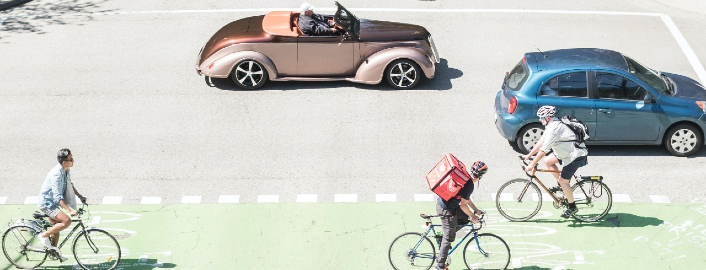
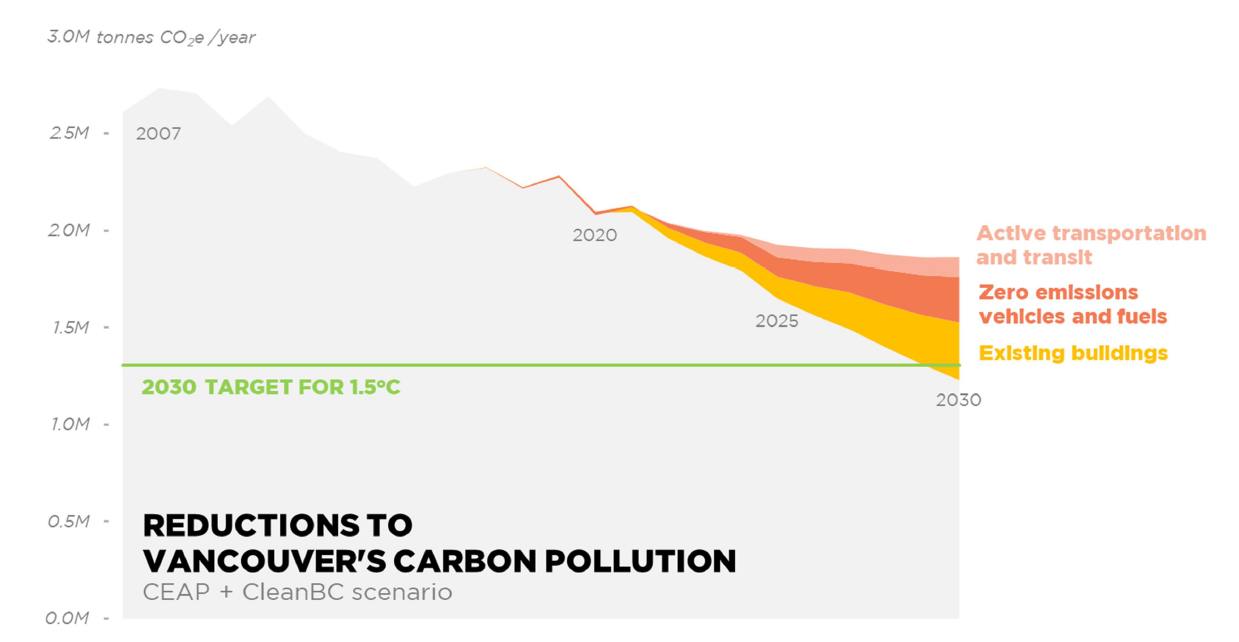
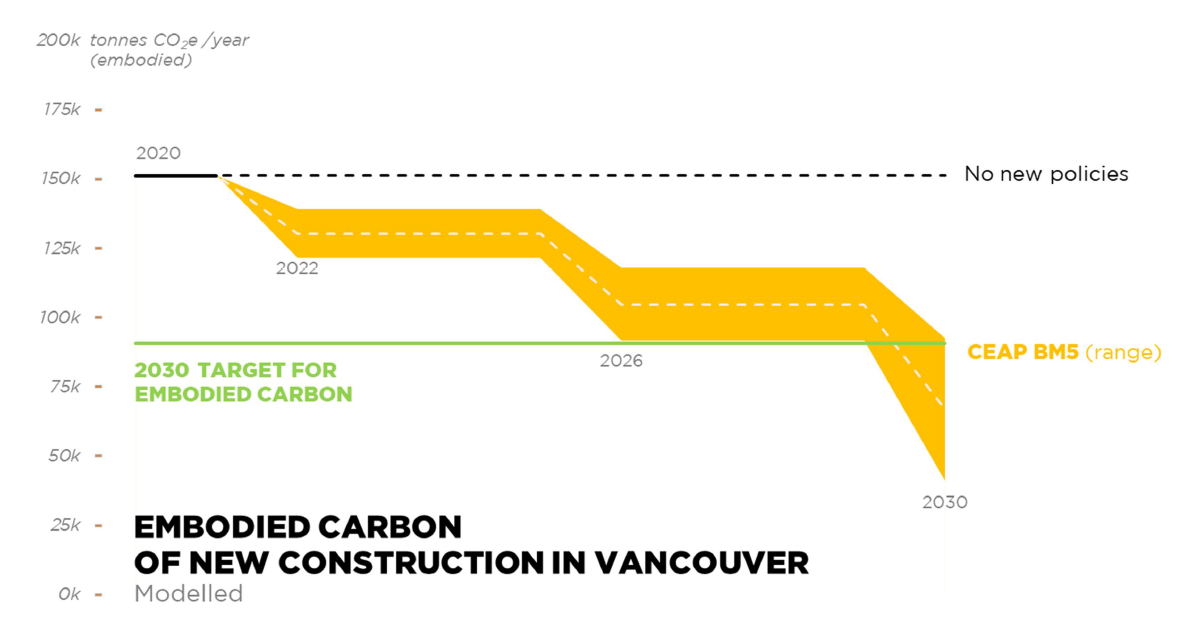

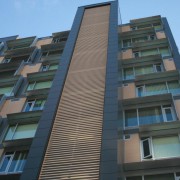
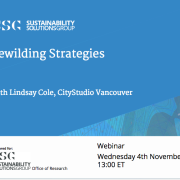




 Photo by Alessio Patron on Unsplash.
Photo by Alessio Patron on Unsplash.